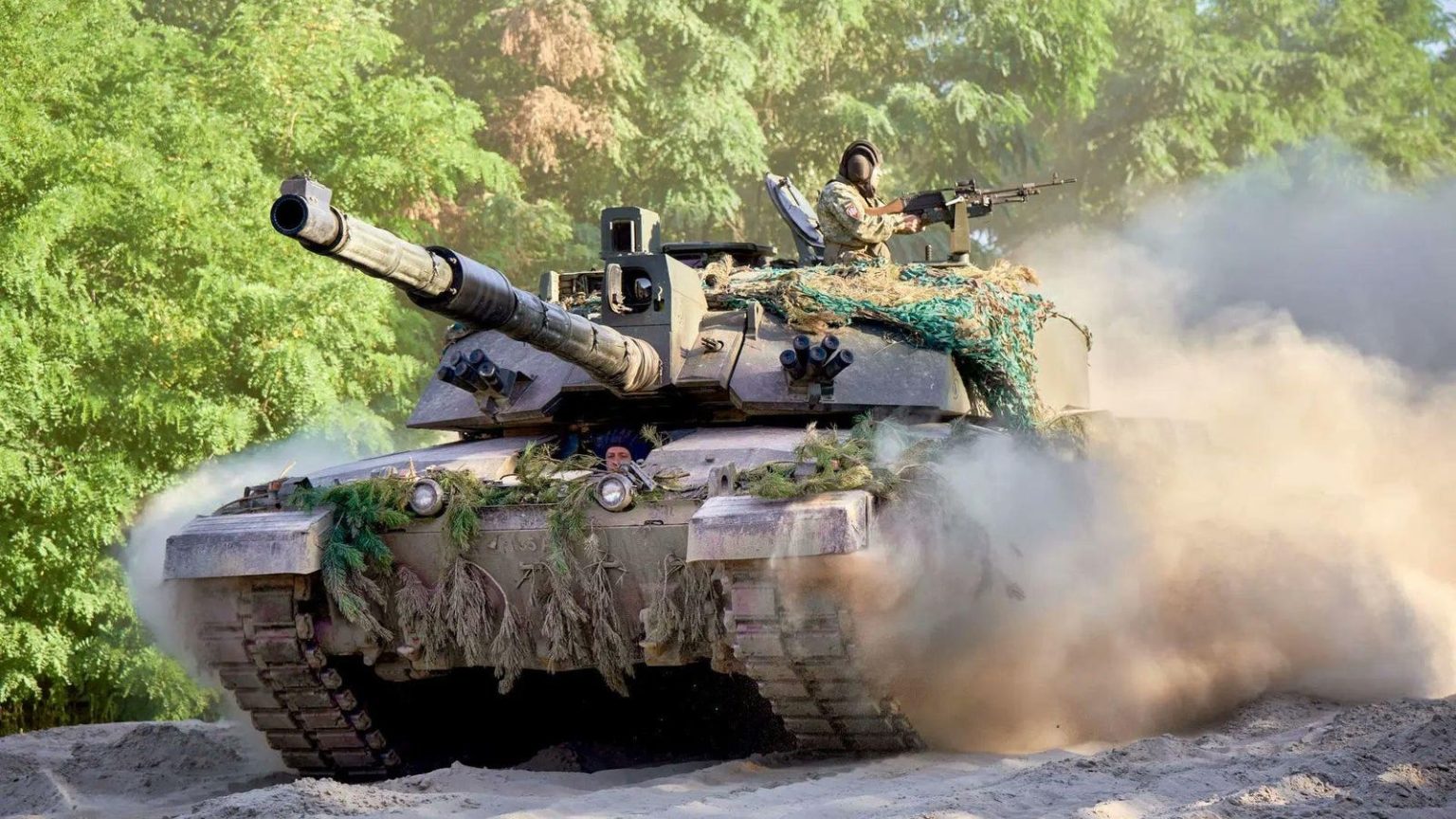The Ukrainian air assault force’s rare British-made Challenger 2 tanks have joined Ukraine’s military operation in Russia’s Kursk Oblast. It’s the latest sign that the Ukrainian operation in the Russian border region isn’t some there-and-back incursion—but an actual invasion with long-term implications.
The first hard evidence that the Ukrainian 82nd Air Assault Brigade—the sole operator of the 14 Challenger 2s the United Kingdom donated to Ukraine last year—had sent the 71-ton, four-person tanks into Kursk came on Sunday, the sixth day of the invasion, when a Russian drone unit posted a video depicting a drone strike on one of the heavily-armored tanks.
The video, posted by the Russian Kaskad unit, depicts a Lancet loitering munition barreling into a Challenger 2 reportedly near the eastern edge of the invasion zone. A photo taken from the ground seems to confirm the Lancet, which weighs up to 25 pounds, destroyed the 1990s-vintage tank.
It’s the 82nd Air Assault Brigade’s second confirmed loss of a Challenger 2: it lost its first during Ukraine’s summer 2023 counteroffensive in Russian-occupied southern Ukraine. After writing off at least two Challenger 2s, the 82nd Air Assault Brigade is down to no more than a dozen tanks in a single company.
The elite 82nd Air Assault Brigade—one of at least three Ukrainian air assault brigades that have contributed forces to the Kursk operation—is suffering significant losses as it fights to extend the Ukrainian zone of control in the Russian Oblast, currently stretching across hundreds of square miles.
Russian troops have posted photos and videos depicting the bloody aftermath of successful ambushes on the vanguard of the 82nd Air Assault Brigade. It seems the brigade has lost several of its American-made Stryker infantry fighting vehicles in addition to that Challenger 2.
To be fair to the 82nd Air Assault Brigade, losses are heavy on both sides in and around the invasion zone. Ukrainian troops have captured hundreds of Russian troops. Ukrainian air defenses, including first-person-view drones performing an air-to-air role for the first time, have knocked out several Russian helicopters and a Sukhoi Su-34 fighter-bomber.
Meanwhile, Russian rockets have destroyed a rare Polish-made S-125 air-defense battery protecting Ukrainian forces from Ukraine’s Sumy Oblast, just across the border from Kursk. One of Ukraine’s precious U.S.-made High-Mobility Artillery Rocket Systems also got hit this week, apparently near Kursk.
That the Ukrainians are willing to risk their rarest and most valuable Western-provided weaponry in Kursk speaks to the intentions of the general staff in Kyiv. The generals plan to seize and hold a significant portion of Kursk.
The question is—why? “Observing the statements of Ukrainian officials and their recent advances, it increasingly appears that Ukraine is aiming to establish a buffer zone that could also serve as leverage for potential negotiations,” Finnish analyst Joni Askola concluded.
But there are hard limits on how big this buffer zone can get. The Russians get a vote, of course—and it’s still possible that the Kremlin organizes a major counteroffensive in Kursk that halts the Ukrainian advance.
But Ukrainian logistics are a limiting factor, too. The deeper into Kursk the 82nd Air Assault Brigade and other brigades penetrate, the harder it becomes for their logisticians to keep them supplied with food, fuel and ammunition.
It’s possible that the 82nd Air Assault Brigade has advanced around 20 miles into Kursk. That might be as far as it can go without stretching its supply lines and risking much heavier losses. “Ukraine should avoid overextending itself,” Askola warned.
Sources:
1. John Hardie: https://x.com/JohnH105/status/1824444946067116033
2. WarVehicleTracker: https://x.com/WarVehicle/status/1824089453918396562
3. Joni Askola: https://x.com/joni_askola/status/1824402526646435970
4. Oryx: https://www.oryxspioenkop.com/2022/02/attack-on-europe-documenting-ukrainian.html
Read the full article here





